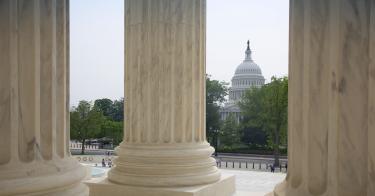They say that nothing gets done in Washington. Tell that to the federal judiciary.
Now that we’re in the final stretch of President Trump’s first term, let’s take a look at what has been accomplished on the judicial appointment front and discuss what we should expect for the rest of the year.
Trump’s appointment total of 200 judges leads the previous five presidents, though the number is just barely ahead of President George W. Bush's total as of July of his fourth year. Vacancies are currently at the lowest level of the Trump presidency, more than 30% lower than when he took office. The new appointments are a huge gain for the judiciary, though the politics surrounding them demonstrate how differently judicial appointments are treated during different administrations.
Back in October 1998, with his own party occupying the White House, then-Senate Judiciary Committee Chairman Patrick Leahy of Vermont declared that 71 vacancies constituted a “crisis.” With the current Republican in the White House, Leahy has said nothing about the 73 judicial vacancies that persist today. When Leahy complained about judicial vacancies, 47.9% of them had been labeled “emergencies” by the Administrative Office of the U.S. Courts. These are longstanding vacancies with a particularly negative effect on judicial caseloads. Today, 56.2% of current vacancies are in this emergency status.
Judicial appointments during the Clinton and Trump presidencies differ in other ways. Republicans forced the Senate to take a separate vote to invoke cloture (or end debate) only four times in President Bill Clinton’s eight years in office. Leahy condemned attempting to use cloture votes to defeat judicial nominees, vowing he would “fight against any filibuster on a judge, whether it was somebody I opposed or supported.” That was then; this is Trump. Leahy has voted to filibuster Trump judicial nominations 76 times.
Clinton appointed 203 judges in his first term, almost the same as Trump has appointed to date. That’s where the similarity ends. Assistant Attorney General Beth Williams has documented that Trump nominees have received higher ratings than Clinton’s from the American Bar Association. Even so, Clinton's first-term judges received a total of 84 Senate votes against confirmation. That’s an average of 0.4 negative votes a piece. Trump’s judges have received 4,290 votes against confirmation, an average that is 54 times higher. I couldn’t believe it either.
Speaking of opposition, individual Democrats have opposed an average of 92 Trump judicial nominations. No Republican voted against more than four of Clinton’s first-term judicial nominations. The shocking contrast does not change much, even if you consider both terms of the Clinton presidency. The average Republican senator voted against 2.6% of Clinton’s judicial nominations. The average Democrat today has voted against 56.8% of Trump’s better-qualified picks.
Suffice it to say that Trump’s judicial appointment total has been achieved against the strongest confirmation obstruction headwinds that any president of either party has ever faced. But that work isn’t finished. A total of 43 judicial nominations are pending in the Senate — 31 in the Judiciary Committee and 12 on the executive calendar.
Granted, this is a presidential election year, which always sees priorities shuffled around. Plus, there is a deadly pandemic on the loose, so that needs to be factored in as well. But the Judiciary Committee just held a hearing to consider six judicial nominations, so they know how to make progress even under these conditions. In 2012, Obama’s reelection year, the committee held hearings into December, and the Senate confirmed judicial nominations until four days before Christmas.
Trump and a determined Senate leadership have made real progress appointing highly qualified women and men to the federal bench. A relentless, systematic campaign of obstruction and opposition makes this achievement even more significant. There’s no reason to stop now.
This piece originally appeared in the Washington Examiner




